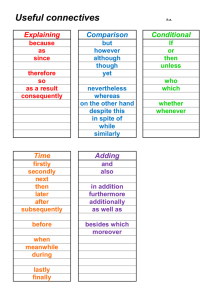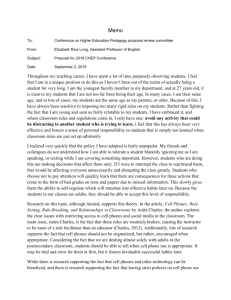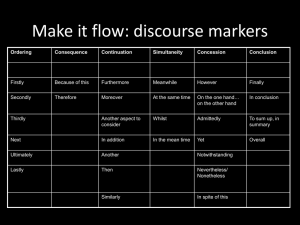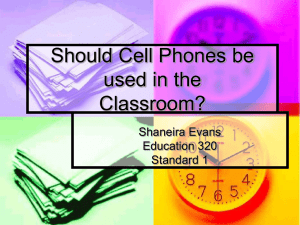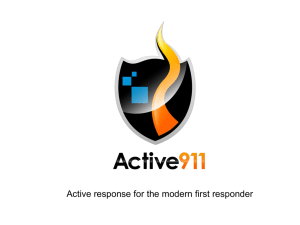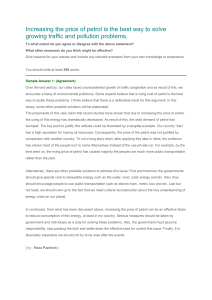Persuasive planner Stephen Graham
advertisement
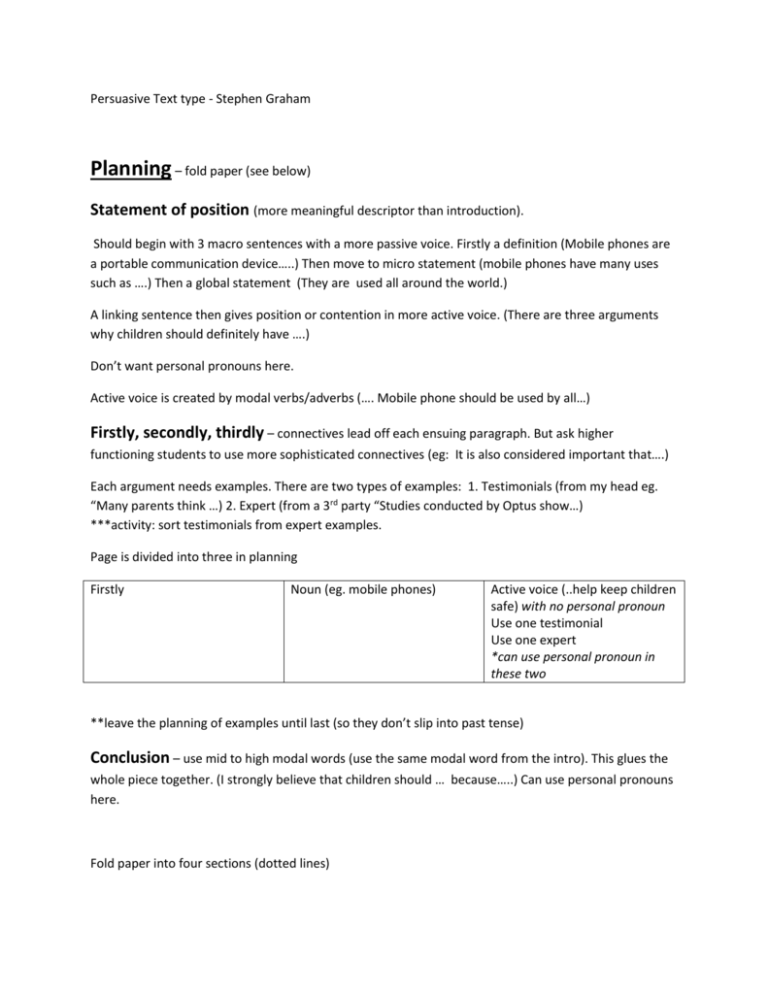
Persuasive Text type - Stephen Graham Planning – fold paper (see below) Statement of position (more meaningful descriptor than introduction). Should begin with 3 macro sentences with a more passive voice. Firstly a definition (Mobile phones are a portable communication device…..) Then move to micro statement (mobile phones have many uses such as ….) Then a global statement (They are used all around the world.) A linking sentence then gives position or contention in more active voice. (There are three arguments why children should definitely have ….) Don’t want personal pronouns here. Active voice is created by modal verbs/adverbs (…. Mobile phone should be used by all…) Firstly, secondly, thirdly – connectives lead off each ensuing paragraph. But ask higher functioning students to use more sophisticated connectives (eg: It is also considered important that….) Each argument needs examples. There are two types of examples: 1. Testimonials (from my head eg. “Many parents think …) 2. Expert (from a 3rd party “Studies conducted by Optus show…) ***activity: sort testimonials from expert examples. Page is divided into three in planning Firstly Noun (eg. mobile phones) Active voice (..help keep children safe) with no personal pronoun Use one testimonial Use one expert *can use personal pronoun in these two **leave the planning of examples until last (so they don’t slip into past tense) Conclusion – use mid to high modal words (use the same modal word from the intro). This glues the whole piece together. (I strongly believe that children should … because…..) Can use personal pronouns here. Fold paper into four sections (dotted lines) Statement of position Firstly… Mobile phones… Help keep children safe… Secondly … Mobile phones… Enable effective communication with friends… Finally… Mobile phones… Teach children how to budget… Conclusion Activities: place modal words in order of strength (hopefully, possibly, might, may, could, fortunately, probably, can, shall, will, certainly, definitely, must..) Use wide hand gestures for impersonal pronouns (most people) and narrow hands for personal (my, me). This gives students a visual idea of the significance/importance of the respective terms.
